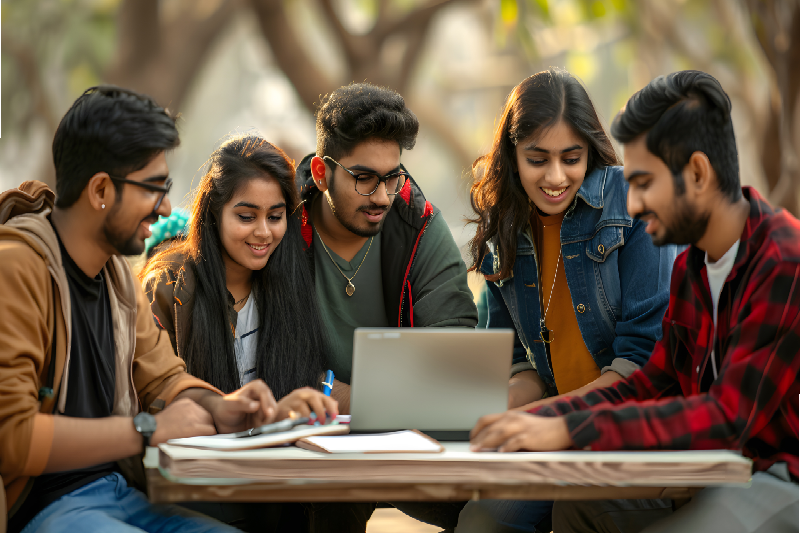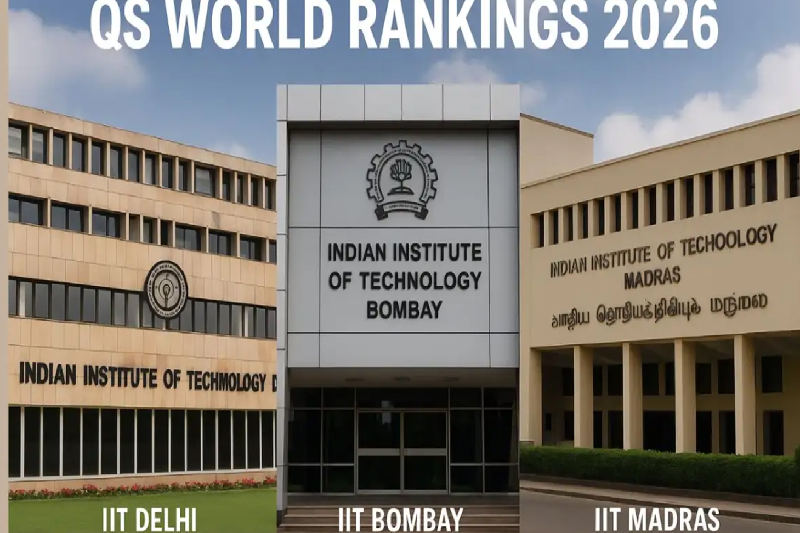
IIT Delhi Open House 2025: Unveiling Breakthroughs in Health, Technology, and Humanity
The Indian Institute of Technology (IIT) Delhi once again opened its doors to innovation and inquiry at its 18th Annual Open House, held on Saturday, November 9, 2025. The event served as a vibrant confluence of ideas, where students, faculty, and industry professionals came together to showcase pioneering research shaping the future of science, technology, and human life.
Drawing over 3,500 visitors, including students from schools and colleges across the region, the Open House featured 200+ scientific posters and live demonstrations across 20 laboratories. The projects spanned ten diverse themes, from healthcare and climate sustainability to artificial intelligence and quantum technology — each reflecting IIT Delhi’s spirit of innovation and social responsibility.
Exploring Science Beyond Boundaries
This year’s Open House revolved around ten multidisciplinary themes:
Healthcare & Biotechnology, Manufacturing & Industry 4.0, Smart and Sustainable Infrastructure, Advanced Materials and Devices, Energy, Climate & Sustainability, Quantum & Semiconductor Technologies, Next Generation Communication, AI/ML & Data Science, Defence and National Security, and Management, Policy & Social Sciences.
Each lab became a window into a future where science meets purpose — where young researchers are not only innovating for academic excellence but for real-world impact.
Amid the array of projects, three particularly stood out — each addressing a pressing global concern: air pollution and its hidden impact on births, the psychological toll of generative AI, and the growing threat of antibiotic resistance in our food.
Tiny Particles, Massive Consequences: Air Pollution’s Hidden Impact on Birth Outcomes
Can something as invisible as fine dust determine whether a baby is born healthy or not?
That’s the central question behind the groundbreaking research by Doris Seyinde, a researcher at IIT Delhi’s Centre for Atmospheric Sciences, originally from Lagos, Nigeria. Seyinde’s seven-year study (2012–2018) explored how PM2.5 air pollutants — microscopic particles smaller than 2.5 micrometers — affect birth outcomes such as low birth weight, preterm births, and stillbirths.
Her findings are alarming:
- 8% of babies are born with low birth weight when exposed to high PM2.5 levels.
- 6% face preterm births.
- 4% suffer stillbirths.
“People often associate air pollution only with respiratory issues,” Seyinde explains. “But PM2.5 can travel from the lungs into the bloodstream, affecting the entire body — even developing fetuses.”
Her research highlights the first trimester as the most critical period, when developing babies are most vulnerable. Socioeconomic disparities also amplify exposure risks. “A wealthy person might live away from industrial areas or use cooking gas, while poorer communities depend on biomass fuels, increasing PM2.5 exposure,” Seyinde notes.
The study also compared Nigeria’s national air quality standards — 20 micrograms per cubic meter — with the World Health Organization’s stricter guideline of 5 micrograms. Seyinde’s projections showed that meeting even the national standard could significantly reduce adverse birth outcomes, as illustrated by her green-tinted projection maps signaling improved health conditions.
Her message is clear: tackling air pollution is not just an environmental necessity but a public health priority, especially for expectant mothers.
When Humans Fear Machines: Understanding the GenAI Anxiety Epidemic
From air quality to mental health, another researcher turned the spotlight inward — on the growing unease around artificial intelligence.
Shweta Kumari Choudhary, a PhD scholar from the Department of Management Studies, investigated the “fear of replacement” among professionals in the age of Generative AI (GenAI).
Her research uncovered a striking emotional response among employees using AI tools in their workplaces. “Whenever I mention generative AI, people get defensive,” she shares. “They fear that one day, the machine will take their job.”
One respondent candidly admitted, “I’m a researcher, but I’m not good at coding. My organisation might soon replace people like me with AI that can do it faster.”
However, Choudhary’s grounded theory approach also revealed adaptive strategies professionals are developing to coexist with AI. These include:
- Collaborating with AI rather than competing with it.
- Networking with peers to share coping strategies.
- Continuous upskilling to stay relevant.
- Redefining work culture to value human creativity alongside technological efficiency.
As one participant wisely put it: “The manual part will be done by me, and the creative thinking part — where I can apply generative AI — will make the process better.”
Choudhary’s research underscores a crucial truth: technology is not the enemy. The real challenge lies in how humans adapt emotionally and professionally to its rapid evolution.
A Silent Epidemic on the Plate: Antibiotic Resistance in Food
Another compelling presentation came from Shikha Balayan of IIT Delhi’s Centre for Rural Development and Technology, who addressed an invisible but urgent crisis — antibiotic residues in poultry products.
Her decade-long review revealed that antibiotics like tetracyclines and fluoroquinolones are commonly found in eggs and meat, introduced as preventive measures for chicks in the early days of life. “From day one, chicks are given antibiotics to reduce mortality,” Balayan explains. “But these residues enter the food chain — from chicken feed to eggs to consumers.”
The danger lies not in short-term illness but in the gradual evolution of antibiotic-resistant bacteria, making common infections harder to treat.
To combat this, Balayan and her team are developing rapid antibiotic detection kits — simple, affordable, and user-friendly. “They’ll work like pregnancy tests,” she says. “A small sample of meat or egg can be tested, giving results within minutes for about ₹100.”
These consumer-centric kits aim to empower the public and improve accountability in local markets, where FSSAI standards exist but enforcement remains weak.
Her innovation represents a vital step toward ensuring food safety, consumer awareness, and sustainable farming practices — essential to prevent an impending antibiotic resistance crisis.
A Celebration of Curiosity and Collaboration
The IIT Delhi Open House 2025 was more than a showcase of research — it was a celebration of curiosity, collaboration, and the power of knowledge. Each project reflected how India’s brightest minds are pushing scientific boundaries to solve pressing global challenges — whether it’s cleaner air, safer food, or healthier workplaces.
By bridging science with society, IIT Delhi reaffirmed its role as a catalyst for innovation and impact — nurturing not just engineers or scientists, but changemakers shaping a sustainable and humane future.
Conclusion
The IIT Delhi Open House 2025 was a microcosm of India’s scientific spirit — one that blends intellect with empathy. From the molecular level of PM2.5 to the ethical dilemmas of AI and the invisible threats in our food chain, every exhibit reminded visitors that science is not confined to laboratories. It lives in the air we breathe, the work we do, and the food we eat — inspiring a generation to question, innovate, and care.



